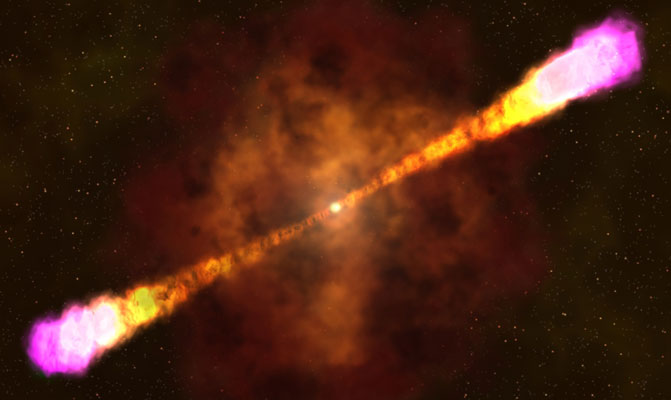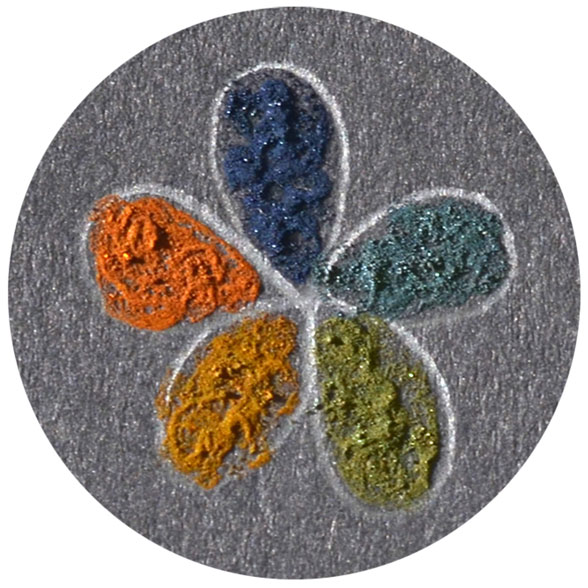
This Article From Issue
November-December 2017
Volume 105, Number 6
Page 334
In this roundup, digital features editor Katie L. Burke summarizes notable recent developments in scientific research, selected from reports compiled in the free electronic newsletter Sigma Xi SmartBrief. Online: https://www.smartbrief.com/sigmaxi/index.jsp
The Birth of a Black Hole
Astronomers have captured the clearest picture yet of the birth of a new black hole from a catastrophic stellar explosion. Gamma ray bursts are one of the most powerful explosions in the universe and are short-lived (sometimes lasting a few seconds). So it is challenging to react to one in time to study the comprehensive event. Using data from several ground- and space-based telescopes, an international team of astronomers assembled an unprecedentedly detailed description of a recent gamma-ray burst (called GRB 160625B) that showed up in the sky in June 2016. They were able to characterize the emission and jets of the gamma-ray burst to settle some longstanding questions about how the explosion and black-hole formation progress. Immediately after the explosion, the prompt emission comes from electrons bouncing around in a magnetic field. In the following seconds or minutes, powerful magnetic fields surrounding the black hole organize emerging matter and energy into tight jets.

Troja, E., et al. Significant and variable linear polarization during the prompt optical flash of GRB 160625B. Nature 547:425–427 (July 26)
Plants Affect Bee Development
A new study clarifies how honeybee larvae develop into worker bees or queens, showing that plants are more important for controlling bee development than had been recognized. It’s long been known that food influences honeybees’ role in the colony—for example, royal jelly is fed to larvae that develop into queens—but it had not been known that worker bees’ development is also influenced by an active ingredient in bee bread, their pollen- and honey-based food. That ingredient turns out to be a type of microRNA, a short noncoding RNA that plays a regulatory role, derived from plants. The microRNAs identified affect plant size and color. When present in bee bread fed to larvae, the microRNAs affect genes that delay reproductive development to keep worker bees sterile. Further study of environmental changes in plants that could affect microRNAs could help entomologists understand current problems with honeybee health.
Zhu, K., et al. Plant microRNAs in larval food regulate honeybee caste development. PLOS Genetics 13(8):e1006946 (August 31)
Fish Fossil Doesn’t Fit Family Tree

A fossil dating to about 360 million years ago, when fish evolved into land-dwelling animals, does not fit clearly in the current evolutionary tree, because it possesses features of two lineages thought to be distinct. The new species of lobe-finned fish, called Hongyu chowi, was found in northern China. The shoulder girdle and support for the gills of this 1.5-meter-long ambush predator, resemble those of early four-legged animals and their closest fish relatives, indicating that the fossil belongs to an extinct group of fish called elpistostegids. But other features resemble a group of fish called rhizodonts that were thought to have branched off from a common ancestor before the lineage that gave rise to four-legged animals emerged. Changes in the shoulder girdle and gill bones are central to the story of the evolution of weight-bearing limbs and jaws characteristic of land-dwelling vertebrates. This fish’s mix of features means that either different groups of lobe-finned fish, including the rhizodonts, independently evolved this shoulder girdle and gill structure, or the rhizodonts are more closely related to four-legged animals and elpistostegids than was once thought.
Zhu, M., P. E. Ahlberg, W.-J. Zhao, and L.-T. Jia. A Devonian tetrapod-like fish reveals substantial parallelism in stem tetrapod evolution. Nature Ecology & Evolution 1:1470–1476 (September 4)
Treatment for Peanut Allergy
A clinical trial with 48 children suggests the first successful long-lasting treatment for peanut allergies. The study participants were given either a daily treatment of a probiotic combined with a peanut protein, or a placebo. The trial released preliminary results in 2013, showing that after one month of treatment 82 percent of children receiving the probiotic could eat peanuts. This follow-up study shows that four years later, 70 percent of the participants in the treatment group can still ingest peanuts without an adverse reaction. The probiotic used was a bacterium, Lactobacillus rhamnosus, which is thought to allay some allergic symptoms. Larger clinical studies are now needed to determine long-term safety outcomes, say the researchers at Murdoch Children’s Research Institute in Australia. They are also studying whether the peanut protein is necessary in conjunction with the probiotic or whether the latter is effective alone.
Hsiao, K.-C., et al. Long-term clinical and immunological effects of probiotic and peanut oral immunotherapy after treatment cessation: 4-year follow-up of a randomised, double-blind, placebo-controlled trial. The Lancet Child & Adolescent Health 1:97–105 (August 15)
Long-Lasting Structural Colors

Inspired by certain vivid colors in nature, such as those of some birds and butterflies, polymer scientists have figured how to make long-lasting “structural” colors. Such colors are formed through light’s interaction with nanostructures rather than through its absorption by a pigment. Pigments fade when their molecules break down, so structural colors can be longer lasting. Oddly enough, the researchers used a pigment to form the structural color by changing the nanostructure of clumps of its molecules. The pigment melanin changes skin color in animals and appears black in its individual nanoparticles. The color was changed from olive to orange to blue by varying the spacing in clusters of the nanoparticles using a silica coating to limit how closely they pack together.
Xiao, M., et al. Bioinspired bright noniridescent photonic melanin supraballs. Science Advances 3(9):e1701151 (September 15)
Homo naledi’s Age Determined
The latest addition to the hominin family tree, Homo naledi, has been dated to the late Middle Pleistocene, 335,000 to 236,000 years ago, which means it could have mingled with Homo sapiens. Phylogenetic analyses had suggested that H. naledi’s mixture of ancestral and derived traits indicated it lived as early as 900,000 years ago. But this study confirms the Middle Pleistocene dating with six independent methods using chemical aging techniques of both the bones and the surrounding sediment.
Dirks, P. H. G. M., et al. The age of Homo naledi and associated sediments in the Rising Star Cave, South Africa. eLife doi:10.7554/eLife.24231 (May 9)

American Scientist Comments and Discussion
To discuss our articles or comment on them, please share them and tag American Scientist on social media platforms. Here are links to our profiles on Twitter, Facebook, and LinkedIn.
If we re-share your post, we will moderate comments/discussion following our comments policy.